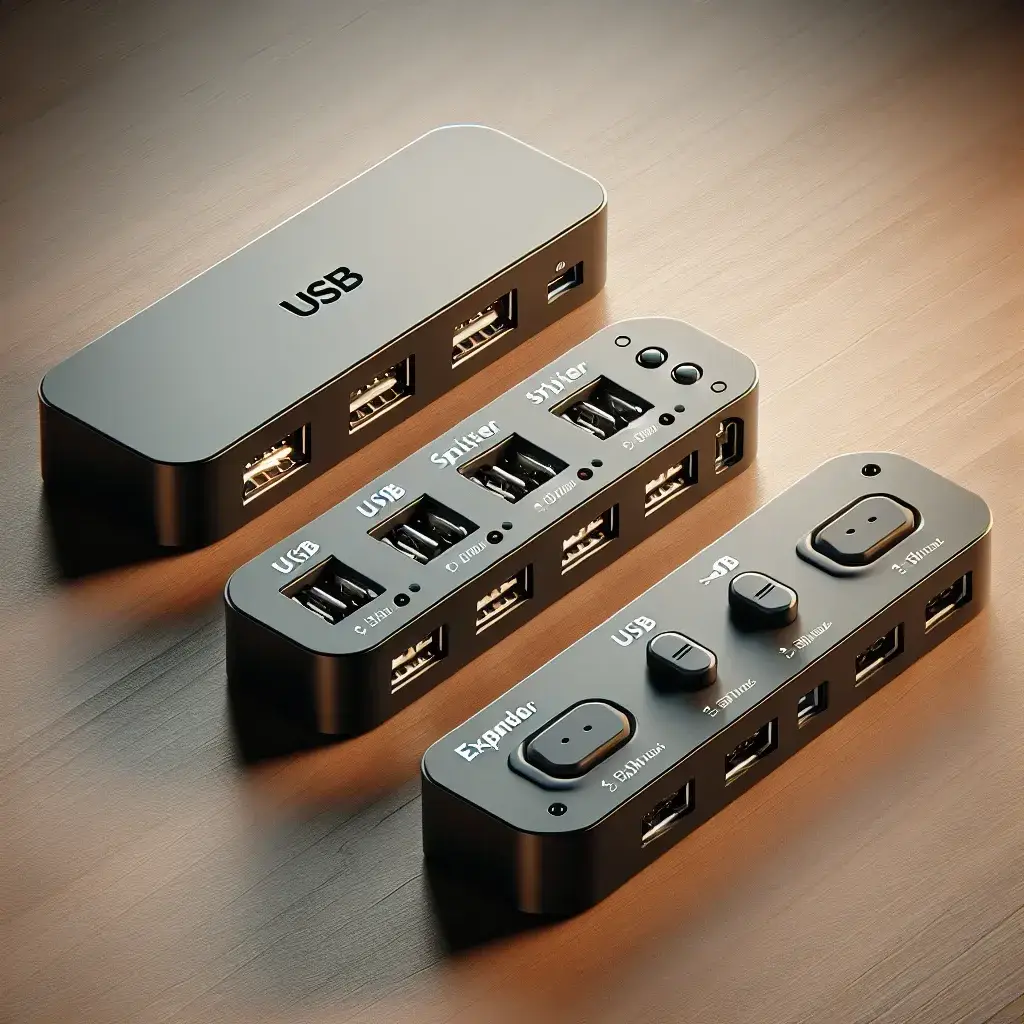Introduction
If you’ve ever found yourself short on USB ports or needing to connect multiple devices to a single port, you may have encountered terms like USB hub, splitter, and expander. While they all aim to facilitate connections for your devices, they serve different purposes. Understanding these differences is crucial to making an informed choice for your specific needs.
Definitions and Basic Functions
Before diving into the key differences, let’s define each term and briefly describe their functions:
- USB Hub: A USB hub is a device that provides multiple USB ports to connect several USB devices to a single USB connector on a computer or other host device. It can include both powered and unpowered varieties.
- USB Splitter: A USB splitter is a device that divides a single USB signal into multiple outputs. It might allow you to connect multiple devices, but it generally cannot operate them simultaneously with high performance.
- USB Expander: A USB expander typically refers to devices that extend the capabilities of USB ports, often including additional features such as data transfer, power delivery, or integrated memory card readers.
Key Differences
| Feature | USB Hub | USB Splitter | USB Expander |
|---|---|---|---|
| Functionality | Connects multiple devices to one port. | Divides a single port into multiple connections. | Extends functionality and often adds extra features. |
| Data Transfer | Supports data transfer for all connected devices. | Limited, may lead to reduced speed. | Often supports high-speed data transfer. |
| Power Delivery | Can provide power to devices (if powered). | Usually does not provide power. | Often supports power delivery features. |
| Device Compatibility | Wide compatibility (USB 2.0, 3.0, etc.). | Compatible but limited by signal strength. | Compatible with various devices, often multi-format. |
Detailed Comparison
1. USB Hub
A USB hub effectively increases the number of USB ports available on your computer. They are commonly used to connect keyboards, mice, printers, and storage devices among others. Here’s a deeper look at its features:
- Powered vs. Unpowered: Powered hubs are equipped with an external power source, which allows them to supply more power to devices, making them ideal for high-energy devices like external hard drives. Unpowered hubs draw power from the host device, which is sufficient for low-energy peripherals such as mice or keyboards.
- Types: USB hubs come in many forms, including desktop hubs, compact hubs for laptops, and even those integrated into charging stations.
- Ports: Commonly available with 4, 7, or even 10 ports, allowing versatility in device connection.
2. USB Splitter
On the other hand, a USB splitter is designed to split a signal but can lead to performance limitations. It uses a single USB port to create multiple outputs but can drastically reduce the performance of connected devices. Key points include:
- Functionality: A USB splitter can connect various devices but may only allow one to be active at a time depending on its design and data bandwidth.
- Limitations: As the splitter divides the bandwidth among all connected devices, you may notice slower speeds or interference when multiple devices are in use.
- Usage Scenario: Splitters are typically used for connecting devices that do not require high data throughput, such as low-energy items.
3. USB Expander
A USB expander can enrich the functionalities of USB ports significantly, often by offering enhanced features alongside additional connections:
- Functionality: USB expanders may include ports with various connection types (such as USB-A, USB-C, HDMI, and card readers) and allow for connections while maximizing data transfer capabilities.
- Power Delivery: Many expanders come equipped with power delivery functionalities, allowing charging for laptops or heavy peripherals.
- Typical Use Cases: Ideal for media professionals requiring a variety of connections or power delivery options.
Choosing the Right Device
Selecting the right device among a hub, splitter, or expander depends on your needs:
- For Standard Usage: If you simply need more ports, a USB hub is your best option, especially if your devices require adequate power and data transfer capabilities.
- For Charging Without Data Transfer: A USB splitter might suffice if you only need to charge devices without the need for simultaneous data transfer.
- For Enhanced Functionality: Opt for a USB expander to maximize the utility of your devices, particularly if you work with multiple formats and require robust data transfer.
Conclusion
Understanding the differences among USB hubs, splitters, and expanders can greatly enhance your productivity and convenience when working with multiple devices. Whether you need to connect several peripherals, charge devices, or expand functionalities, one of these devices will surely meet your needs. Choose wisely and ensure your devices have the connectivity they require!

